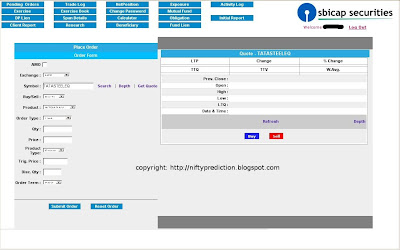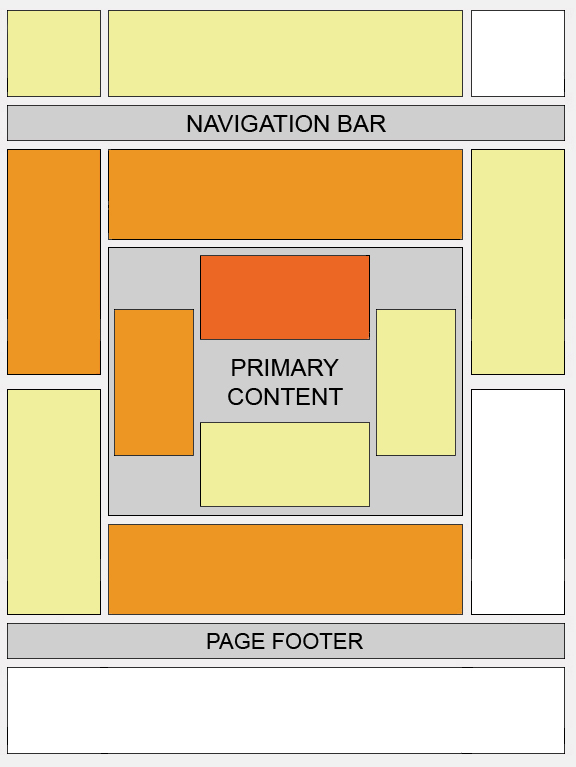I've an online trading account with sbicap securities which is linked to my
SBI Demat account. Here are details of my experience with them till today.
Brokerage :1) Brokerage of 0.5% for deliver and 0.1% for intraday.
2) Brokerage for Options: 2.5% of Options premium or Rs. 100/-, whichever is higher.
3) Brokerage for Futures: 0.03% for square off (i.e. intraday) and 0.05% for carry forward.
Positives : 1) Good connection, never had problems of server failure.
2) I am located in Mumbai. Good customer service. I have always found someone to answer my complaints.
3) Can apply for IPO online. IPO and derviatives trading has been recently added. So shows they are trying hard to improve their services. Their customer service through email has also shown noticeable improvement.
4) Trading in both BSE and NSE possible.
Negatives :1) Have had problems with stop loss order not working.
2) Whenver I have traded in options, they have miscalculated my profit and then later corrected it the next day. This problem can and should be solved soon.
3) Cannot apply for all mutual funds online. I think they have recently added the facility of applying for reliance mutual funds, but i have myself never used that. Anyway other mutual funds are yet to be available online. (
update:
The list of Mutual Funds available for buying through SBICAP Securities is growing. Read my post on
Buying Mutual Funds through SBICAP Securities)
SBICAP Securities Online Trading Platform :This is how SBICAP Seucirites internet trading platform looks like. This picture is taken after market hours. During market hours the quotes / tickers are live and as in any other trading platform they are blue or red in colour accordingly as the ticker increases or decreases in value.
 Some highlights of my experience with Internet Trading Platform of SBICAP Securities :
Some highlights of my experience with Internet Trading Platform of SBICAP Securities :1. Overall I am happy with the experience. But if you are a heavy volume active Intraday trader, i am not sure you will be as satisfied.
2. Have had problems with this platform working on linux. I can watch quotes but the screen hangs while placing orders. With windows it works perfect. However I have been able to modify orders on linux machines. Strangely not been able to cancel orders there. But then to cancel an order i just modify the status of the order from "DAY" to "IOC". An IOC order means Immediate or Cancel order.
Recently SBICAP Securities have also launched one more trading platform called as "
LITE" which is mainly meant for dialup users or users who do not care about live streaming quotes. You can still get quotes of stocks but you have to click on 'refresh'. You can place all buy / seel orders for equities as well as F&O as you can for the normal internet trading platform. For me, LITE has been useful because i am unable to place orders with the normal internet trading platform on linux machines in my office. The snapshot (taken after market hours) of LITE trading platform is shown below.
 Some highlits of my experience with LITE.
Some highlits of my experience with LITE.1. The quote shown in LITE is sometimes not updated, i.e. it shows wrong quote. LITE is definitely not suitable for Intraday traders. For other traders it is good enough.
2. Once I suspect my sell order for a nifty option did not go through even though the price of the option , at least according to the NSE website went higher than my sell price.
3. Other than the experience mentioned in 2., LITE has worked ok. But I recommend watching / keeping an eye on nse website for quotes while using LITE.
Experience with customer care service of SBICAP Securities :Here is some practical information which is not so easily available even on the webpage of SBICAP Seucirites at the time of writing this.
Customer Care number for any questions / issues related to Ebroking :
022-30273342Currently their website mentions customer care numbers
here and they will transfer you to Ebroking account once you tell them your situation. (if your situation is related to ebroking ofcourse :) ). Instead you can directly call them on the above number (try even if you are not located in Mumbai) and there wont be any transfering.
Even if you are located somewhere else and call their brach, in order to avoid delay, you can quickly ask them to transfer you to Ebroking section immediately to save time and energy.
Customer Care Email Address : helpdesk@sbicapsec.comCurrently their website mentions two email addresses : sslcare@sbicapsec.com and complaints.ssl@sbicaps.com . Dont use these email addresses. Use helpdesk@sbicapsec.com
Experience with online customer care : helpdesk@sbicapsec.com
1. I had sent them an email complaining no one responds to my complaints sent by email. I recieved a call from them within one day (the lady tried to call me thrice, with two failed attempts). I felt good. Then she gave me the above ebroking number for any further issues i might have.
2. I had sent an email complaining that they charge 10% brokerage for options. Noone responded. By the way i was wrong. they do not charge 10% but a flat fee of Rs.100 per option trade, which just happened to be 10% in that particular trade. (
update: the customer service of SBICAP seems to be improving. A few days ago i sent them an email asking brokerage for futures and options, i got a response within 2 hours!)
Experience with customer care ( phone ) : 022-30273342
1. Prompt and immediate resetting of password when i called them.
2. Immediate explaination of something i did not understand in their online trading system. I did not know what AMO meant. By the way it means After market order (orders you can place after market hours).
3. Immediate help offered to sell praj shares i had bought when i was unable to access a computer.
4. One slightly less satisfactory experience. I had called them to ask what is the difference between buying shares in 'margin account' and 'Intraday account'. The lady told me dont use margin account for cash market , use it only for F&0. She patiently talked to me, but failed to convince me why is Trading in Margin account shown as an option for the cash market if I am not supposed to use it. Anyway, the positive thing is the lady did talk to me for a while patiently.
Overall : full points for the customer care phone number. My issue was more or less always resolved.
Related posts :




























